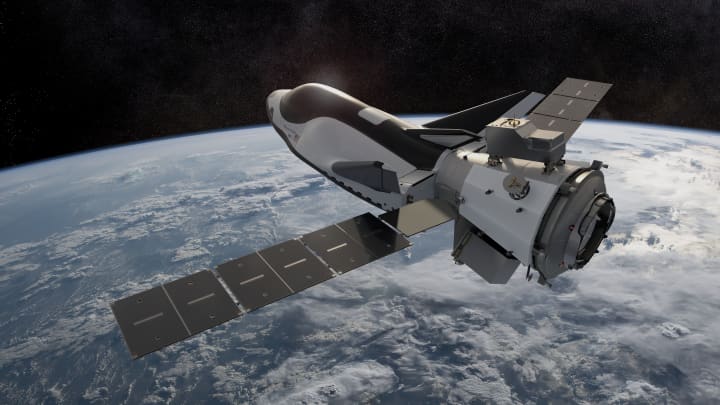
Sierra Space, one of the sector's most valuable private companies, laid off several hundred employees and contractors this week, CNBC has learned.
A Sierra Space spokesperson confirmed the company let go of about 165 employees on Thursday, but declined to specify the number of contractors affected. Former Sierra Space employees told CNBC that the layoffs included a significant number of contractors, with the cuts including hundreds of personnel in total.
The laid-off employees received two weeks of paid non-working notice, plus four weeks of severance pay and health care benefits through the end of the year. Sierra Space had about 2,000 employees before reducing its workforce, the company spokesperson said.
The Colorado-based company, which was recently valued at more than $5 billion, is pushing hard to fly the long-awaited first mission of its Dream Chaser spaceplane.
Sierra Space this week shipped the first Dream Chaser, named Tenacity, for pre-launch testing at NASA's Armstrong facility in Ohio. The layoffs began soon after, the Sierra Space spokesperson said, noting the company conducted a surge in hiring this year to complete work on the Tenacity spacecraft.
With Tenacity shipped, Sierra Space's spokesperson said the company is realigning to focus on the operations phase of Dream Chaser's first mission, as well as on classified national security work.
The latter part of Sierra Space's realignment includes adding nearly 150 employees with security clearances from Sierra Nevada Corp., the aerospace and defense contractor owned by and , which the space company was spun out of two years ago. Sierra Space's spokesperson said the company is creating a national security space team to work on several classified contracts.
Sierra Space also recently before the layoffs: COO Jeff Babione, who retired, and Senior Vice President of Space Destinations Neeraj Gupta. The company said the departures were unrelated.
Two months ago, Sierra raised at a $5.3 billion valuation.
.
Dream Chaser has been in development for years with a goal to deliver cargo and eventually crew to low Earth orbit as a reusable vehicle. It resembles a miniaturized NASA Space Shuttle in appearance and is built to launch atop a traditional rocket and land on a runway like an airplane.
The first Dream Chaser launch was previously scheduled for late last year, but delays in the development of United Launch Alliance's Vulcan rocket pushed back that timeline. Dream Chaser is planned to launch on ULA's second Vulcan mission, with .
Dream Chaser has won NASA contracts to fly seven cargo missions to and from the International Space Station.




